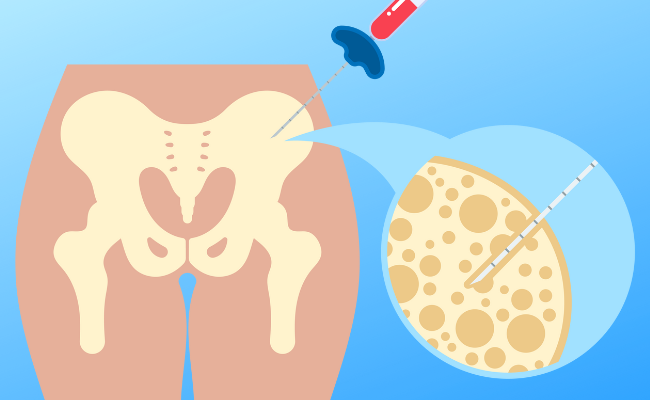Know about Stem Cell Transplant
- December 26, 2023
- No Comments

What is Stem Cell Transplant?
A stem cell transplant, also referred to as hematopoietic stem cell transplant (HSCT) or bone marrow transplant, is a medical procedure designed to replace or repair damaged cells within the body. Stem cells, which possess the unique capability to differentiate into various specialized cell types, are transplanted to address conditions such as cancer, blood disorders, and autoimmune diseases. While the procedure is commonly known as a bone marrow transplant, it frequently utilizes peripheral blood stem cells found in the bloodstream. Whether using a patient's own healthy stem cells or those donated, healthcare providers employ stem cell transplants as an innovative and versatile approach to treat a diverse array of medical conditions.
Why Stem Cell Transplant is Performed?
Stem cell transplants are undertaken for diverse reasons, primarily centered around their regenerative and reparative capacities. Common scenarios prompting the consideration of stem cell transplant include:
- Blood Disorders: Stem cell transplants are frequently employed to treat blood disorders such as leukemia, lymphoma, and multiple myeloma. The procedure aims to replace abnormal or malfunctioning blood cells with healthy ones, restoring normal blood production.
- Immune System Disorders: Conditions affecting the immune system, like severe combined immunodeficiency (SCID) or autoimmune diseases, may prompt stem cell transplant to rejuvenate or modulate the immune response.
- Genetic Disorders: Inherited genetic disorders, such as sickle cell anemia or thalassemia, may be addressed through stem cell transplant to introduce healthy cells capable of producing normal functioning proteins.
- Certain Cancers: Stem cell transplant is an integral part of the treatment strategy for certain cancers, serving to replace or augment damaged bone marrow or immune cells following intensive cancer therapies.
How is Stem Cell Transplant Performed?
The stem cell transplant process involves several key steps, with variations based on the specific type of transplant and the underlying condition being treated:
- Collection of Stem Cells: Stem cells can be collected from different sources, including bone marrow, peripheral blood, or umbilical cord blood. The chosen method depends on the patient's condition and the availability of suitable donors.
- Conditioning or Preparative Regimen: Before the transplant, patients may undergo a conditioning regimen, which involves high-dose chemotherapy, radiation therapy, or a combination of both. This is done to eliminate diseased cells and create space in the bone marrow for the transplanted stem cells.
- Transplantation: The collected stem cells are infused into the patient's bloodstream through a vein, similar to a blood transfusion. Once in the bloodstream, the stem cells naturally migrate to the bone marrow, where they begin the process of reconstitution and differentiation.
- Engraftment: Engraftment refers to the successful establishment of transplanted stem cells in the recipient's bone marrow. It is a critical phase during which the infused cells begin producing new blood cells and restoring normal function.
- Post-Transplant Care: Patients require meticulous post-transplant care, including monitoring for potential complications, managing side effects, and preventing infections. Immunosuppressive medications may be prescribed to prevent graft-versus-host disease (GVHD) in certain cases.
Treatment Solutions and Alternatives:
Stem cell transplant represents a powerful treatment solution for various conditions, but it is not the sole approach. Alternative treatments and considerations include:
- Chemotherapy and Radiation Therapy: In some cases, aggressive chemotherapy and/or radiation therapy may be employed as primary treatment options, especially if a stem cell transplant is not feasible or poses significant risks.
- Immunosuppressive Medications: For autoimmune diseases or certain immune system disorders, immunosuppressive medications may be used to modulate the immune response and manage symptoms.
- Targeted Therapies: Advancements in medical research have led to the development of targeted therapies that specifically target cancer cells or disease-causing mechanisms. These therapies may be utilized as alternatives or in conjunction with stem cell transplant.
Benefits of Stem Cell Transplant:
- Disease Eradication: Stem cell transplant has the potential to eradicate or significantly reduce the burden of certain diseases, especially hematological malignancies, providing a chance for long-term remission.
- Restoration of Normal Blood Production: In cases of blood disorders, stem cell transplant aims to restore normal blood production, addressing issues such as anemia, clotting disorders, and compromised immune function.
- Potential Cure for Genetic Disorders: Stem cell transplant offers a potential cure for some genetic disorders by introducing healthy cells that can produce normal proteins, mitigating the impact of the underlying genetic mutation.
- Immune System Modulation: For immune system disorders, stem cell transplant allows for the modulation of the immune response, potentially halting the progression of autoimmune diseases or enhancing the immune system's ability to combat infections.
- Opportunity for Allogeneic Transplants: Allogeneic transplants, which involve stem cells from a donor, provide the advantage of introducing healthy cells with the potential for an immune response against residual cancer cells—an effect known as graft-versus-tumor.
Comments (0)